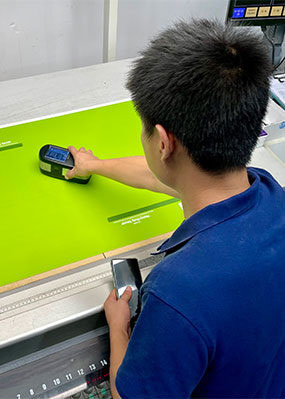As businesses and consumers alike become more environmentally conscious, the demand for eco-friendly packaging and displays continues to grow. Cardboard displays are no exception.
Not only are they a popular choice for retail marketing, but they can also be made with sustainable materials that reduce environmental impact. In this blog, we’ll explore the best materials for creating eco-friendly cardboard displays that are both functional and environmentally responsible.
1. Recycled Cardboard
Recycled cardboard is one of the most eco-friendly materials for display production. Made from paper that has been reused, it reduces the need for new raw materials and helps divert waste from landfills.
Benefits:
- Sustainability: Recycled cardboard uses fewer resources and lowers the environmental footprint of production.
- Cost-effective: It’s often more affordable than virgin cardboard.
- Availability: Readily available and can be sourced from a variety of post-consumer and post-industrial waste.
Using recycled cardboard for displays helps companies maintain a greener approach without compromising on quality or design flexibility.
2. FSC-Certified Cardboard
FSC (Forest Stewardship Council) certification ensures that the cardboard comes from responsibly managed forests. The FSC label means the wood used for production is harvested in an environmentally responsible, socially beneficial, and economically viable way.
Benefits:
- Responsible sourcing: FSC certification guarantees that the material is sourced ethically, promoting sustainable forest management.
- Traceability: You can trace the material from forest to finished product, ensuring it meets high environmental standards.
- Supporting biodiversity: FSC-certified forests often prioritize biodiversity, reducing the negative environmental impacts of deforestation.
Choosing FSC-certified cardboard for your displays helps protect forests and promotes responsible sourcing practices.
3. Recycled Paperboard
Paperboard is a type of thick, durable paper material often used in packaging. Recycled paperboard is made from post-consumer recycled content and can be used to create sturdy, eco-friendly displays.
Benefits:
- Durability: Recycled paperboard is strong enough to handle larger or heavier items.
- Sustainability: Reduces the need for virgin materials, cutting down on the carbon footprint.
- Recyclable: After use, recycled paperboard can be easily recycled again, continuing its life cycle.
Recycled paperboard is a great choice for eco-conscious companies looking to combine strength and sustainability in their displays.
4. Kraft Paper
Kraft paper is made from wood pulp and is known for its strength and natural brown color. It’s typically unbleached and is considered an environmentally friendly option.
Benefits:
- Natural look: The earthy, rustic appearance of kraft paper is often used for minimalist or vintage-style displays.
- Strong and durable: Kraft paper is tough and holds up well for in-store displays.
- Recyclable: Like other cardboard materials, kraft paper is recyclable and biodegradable.
Using kraft paper for displays gives your product a natural, eco-friendly look while ensuring sustainability.
5. Biodegradable Coatings
Many eco-friendly cardboard displays are finished with biodegradable coatings, instead of plastic-based laminates or coatings. These coatings are made from natural materials like corn starch or plant-based oils, making them compostable and less harmful to the environment.
Benefits:
- Eco-friendly: Biodegradable coatings break down naturally, reducing landfill waste.
- Protects the display: It helps protect the display from moisture or damage without the environmental impact of traditional coatings.
- Compostable: Some biodegradable coatings can be composted, returning nutrients to the earth.
Using biodegradable coatings instead of plastic options is a great way to make your cardboard displays even more sustainable.
6. Hemp-Based Cardboard
Hemp-based cardboard is made from the fibers of the hemp plant. Hemp is a renewable resource that grows quickly, making it a highly sustainable option for eco-friendly packaging.
Benefits:
- Highly renewable: Hemp grows faster than trees and requires fewer chemicals or pesticides.
- Strong material: Hemp fibers are incredibly strong, making them ideal for durable displays.
- Carbon negative: Hemp plants absorb carbon dioxide during growth, reducing the overall carbon footprint.
Although not as common as recycled or FSC-certified cardboard, hemp-based cardboard is a promising alternative for businesses looking to go green.
7. Water-Based Inks
While not a material for the display itself, the type of ink used for printing on cardboard is important for sustainability. Water-based inks are an eco-friendly alternative to petroleum-based inks, which release harmful chemicals into the environment.
Benefits:
- Non-toxic: Water-based inks are free from harmful solvents, making them safer for workers and the environment.
- Recyclable: These inks don’t interfere with the recycling process, so the cardboard can be easily reused.
- Eco-friendly: They have a lower environmental impact compared to traditional inks, which are often harmful to air and water quality.
Opting for water-based inks ensures that the printing process is as sustainable as the materials used for the display.
Conclusion
Choosing the best materials for eco-friendly cardboard displays is a great way to reduce your business’s environmental impact while maintaining an attractive and functional marketing tool. From recycled cardboard and FSC-certified materials to hemp-based options and biodegradable coatings, there are plenty of sustainable choices available. By making the right material selection, you can create displays that align with your company’s values and appeal to environmentally conscious consumers.
Making the switch to eco-friendly cardboard displays not only helps the environment but can also enhance your brand’s reputation as a responsible and forward-thinking business. So, next time you plan your retail displays, consider the material choices that will make the biggest positive impact on the planet.


